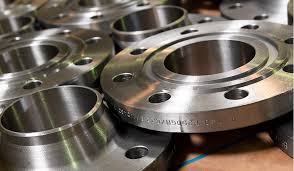
Menu
The “Flanges: Types, Applications, and Installation” course provides participants with comprehensive knowledge of flanges, including their types, applications, and installation procedures. This course covers the fundamentals of flange design, material selection, sealing mechanisms, and best practices for ensuring safe and efficient flange connections in various industrial settings
- Understanding Flange Types: Gain knowledge of different types of flanges and their specific applications.
- Flange Design and Material Selection: Learn about flange design principles and considerations for selecting appropriate materials.
- Sealing Mechanisms: Understand the different sealing mechanisms used in flange connections and their performance characteristics.
- Installation Procedures: Develop proficiency in the proper installation techniques and procedures for flanges.
- Safety and Maintenance: Acquire knowledge on safety precautions and maintenance practices for flange connections.
- Application in exploration: Learn how geomechanical analysis can optimize exploration activities, from seismic interpretation to wellbore stability.
- Production optimization: Explore techniques to enhance production efficiency, manage reservoir depletion, and prevent subsidence.
- Operational safety: Emphasize the importance of geomechanics in maintaining well integrity and mitigating risks such as wellbore collapse and sand production.
Introduction to Flanges:
- Definition and purpose of flanges in piping systems
- Types of flanges: welding neck, slip-on, socket weld, threaded, blind, and lap joint
- Applications in various industries: oil and gas, petrochemical, power generation, and manufacturing
Flange Design and Material Selection:
- Flange design principles: dimensions, ratings, and standards (ANSI, ASME, DIN, etc.)
- Selection criteria for flange materials: steel, stainless steel, alloy, and non-metallic materials
- Considerations for high-pressure and high-temperature applications
Sealing Mechanisms:
- Gasket types and materials: spiral wound, ring joint, compressed sheet, and elastomer
- Flange facing and surface finish requirements for optimal sealing
- Factors influencing gasket selection: temperature, pressure, media, and flange materials
Installation Procedures:
- Pre-installation checks and preparations
- Proper alignment and positioning of flanges
- Bolt tightening techniques and torque values
- Flange assembly and disassembly procedures
Flange Inspection and Testing:
- Visual inspection of flange components for damage or defects
- Non-destructive testing methods: ultrasonic, radiographic, and dye penetrant testing
- Hydrostatic and pneumatic pressure testing of flange connections
Safety Considerations:
- Safety precautions for working with flanges and pressurized systems
- Handling and storage of flange components
- Leak detection and response procedures
Maintenance and Troubleshooting:
- Routine maintenance practices for flange connections
- Troubleshooting common flange issues: leaks, bolt failure, and corrosion
- Repair and remediation techniques
Case Studies and Practical Exercises:
- Real-world examples of flange applications and installations
- Hands-on exercises in flange assembly, tightening, and inspection
- Group discussions on best practices and lessons learned
By the end of this course, participants will:
- Have a comprehensive understanding of different types of flanges and their applications.
- Be able to select appropriate flange materials and gaskets based on application requirements.
- Understand the principles of flange installation and tightening for secure and leak-free connections.
- Develop skills in flange inspection, testing, and maintenance.
- Be aware of safety precautions and best practices for working with flanges.
This course is suitable for:
- Piping Engineers
- Mechanical Engineers
- Maintenance Technicians
- Plant Operators
- Construction Supervisors
- Quality Control Inspectors
- Anyone involved in the design, installation, or maintenance of piping systems with flange connections
Enroll Now
To enroll in the “Flanges: Types, Applications, and Installation” course, visit our course registration page or contact our course coordinator at [email protected]

Get In Touch!
Contact us for a quote or in case of any urgent queries please send us an email on: [email protected]
we will get back to you right away!